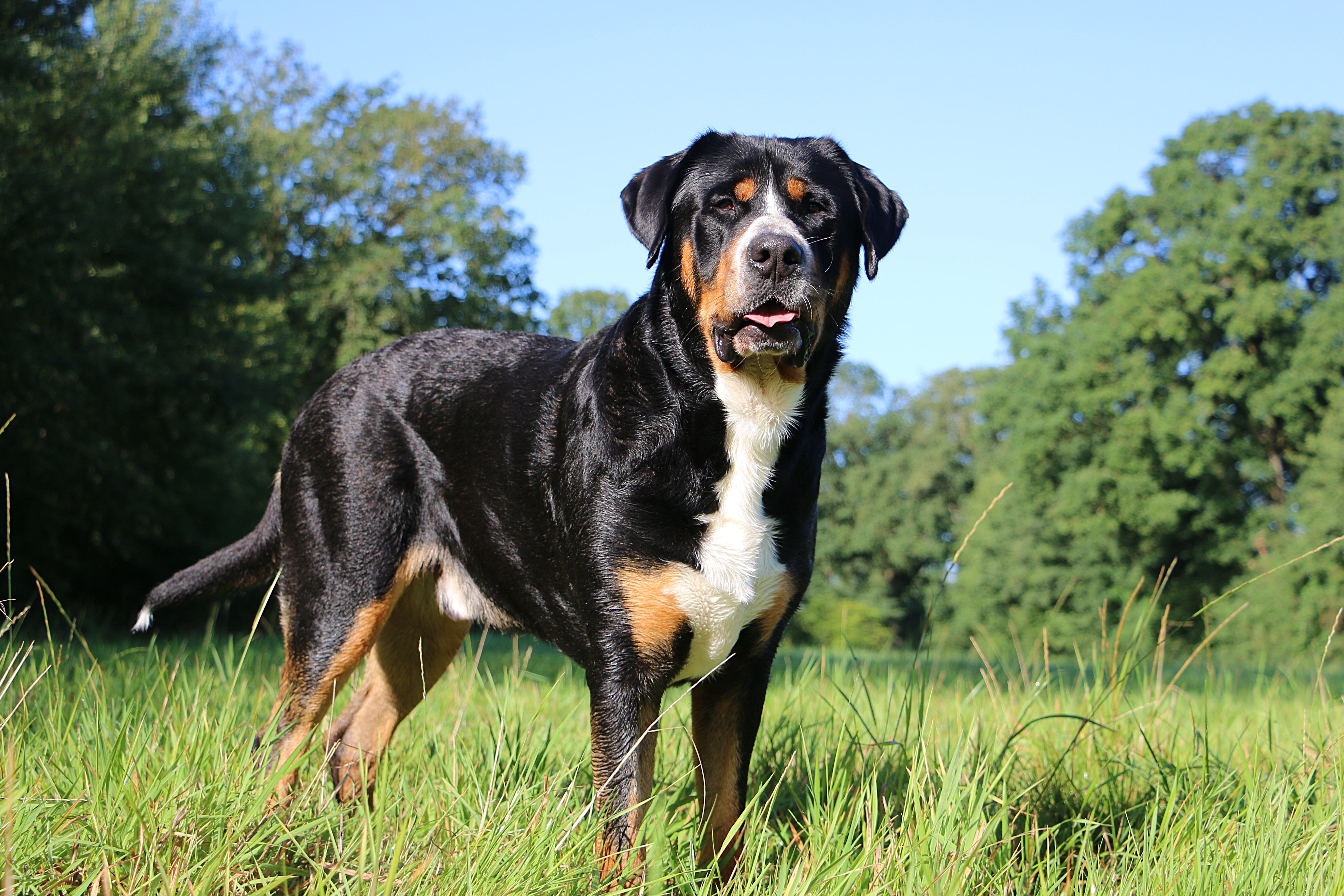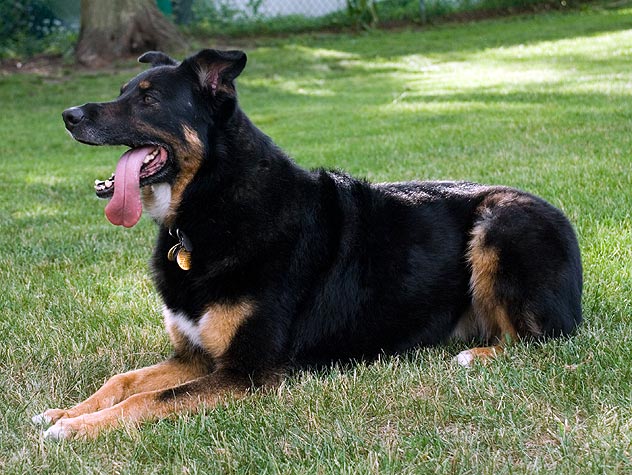Greater Swiss Mountain Dog
Large and powerful, Greater Swiss Mountain Dogs can reach up to 140 pounds. Their double coat has a thick undercoat and dense outer coat which helped them in their past life as guardian dogs. They are gentle, animated, calm, sturdy, and muscular. They have deep, searching brown eyes and an even temperament making them great family dogs for those with large breed experience.
Breed characteristics carousel
Learn More
Need to Know
- Dogs suitable for experienced owners
- Extra training required
- Generally healthy breed
- Enjoys vigorous walks
- Large dog
- Some drool
- Requires regular grooming
- Chatty and vocal dog
- Barks and alerts to visitors/anything unusual
- Could have issues with unknown dogs but gets along with known dogs
- Gets along with other pets with training
- Great family dog
- Needs a large yard in suburban or rural areas
- Can be left alone occasionally with training
- AKC Registered Breed

Personality
Large, loyal, and loving, the Greater Swiss Mountain Dog is a devoted family companion. They are true gentle giants, calm and easygoing when trained properly to have good manners. They can be territorial and alert thanks to their history as watchdogs.
There are four types of Swiss Mountain Dogs and the Greater Swiss Mountain Dog breed is the largest and oldest. They are descended from the Mastiff or Molossian dogs bred by the Romans and were likely introduced when the Romans crossed through Switzerland. They are guardian dogs, protecting livestock and homes, and have an unmatched work ethic. The breed has grown slowly in popularity, with the first American litter born in 1970.
Owners would benefit from having large dog experience. Greater Swiss Mountain Dogs are slow to mature and that requires patience. When calm and well-trained, these gentle giants are pleasant and easy to live with.
Regular long walks, games, and training will keep a Swiss Mountain Dog happy and healthy, as will dog sports or activities if possible. They would adore cart pulling, dry-land mushing, man-trailing, rallying, or anything of the sort.
A large dog needs a large home and a large, secure yard—plus a large bed, crate, collar, car, and more. Greater Swiss Mountain Dogs will struggle with stairs as puppies and elderly dogs, so single-story homes are best if possible. Narrow hallways are tough, so open floor plans are ideal.
Regular brushing with a stiff brush will help keep Greater Swiss Mountain Dogs neat, as will checking paws and ears. If you think professional grooming might be needed at any point, it’s important to introduce it to your dog as soon as possible so they get used to it.
The Greater Swiss Mountain Dog breed can be slow to mature. They are also sensitive and require careful handling to build a good foundational relationship with their owners. Positive reinforcement is best for training. Teach them good manners and socialize them frequently.
For families with active older children and a lot of space indoors and out, the Greater Swiss Mountain Dog breed can be a great family companion. They don’t do well with very small children due to their size and how late they mature—they can be clumsy. They are born protectors, so they might feel stressed in homes with a lot of noise or visitors.
The cost of a Greater Swiss Mountain Dog from a breeder is significantly more than the cost of adopting one from a local shelter or rescue. The adoption fee usually covers additional items such as spaying or neutering, vaccines, and microchipping.

Learn more about feeding and caring for your Greater Swiss Mountain Dog on Purina.
Did You Know?
- The Great Swiss Mountain Dog was almost eradicated in the 1800s.
- Saint Bernards and Great Swiss Mountain Dogs were closely linked and often considered the same dog until the early 1900s.

